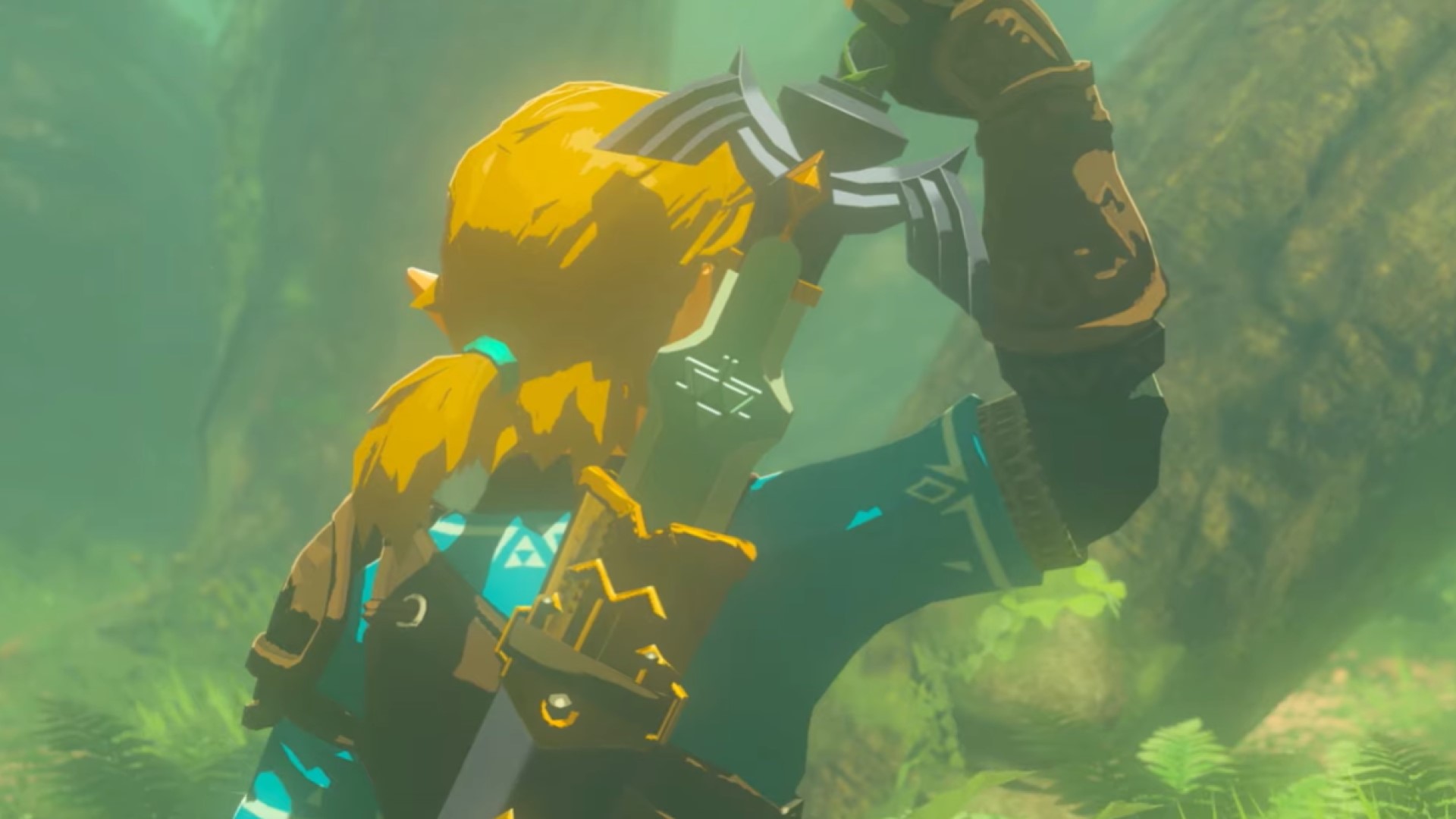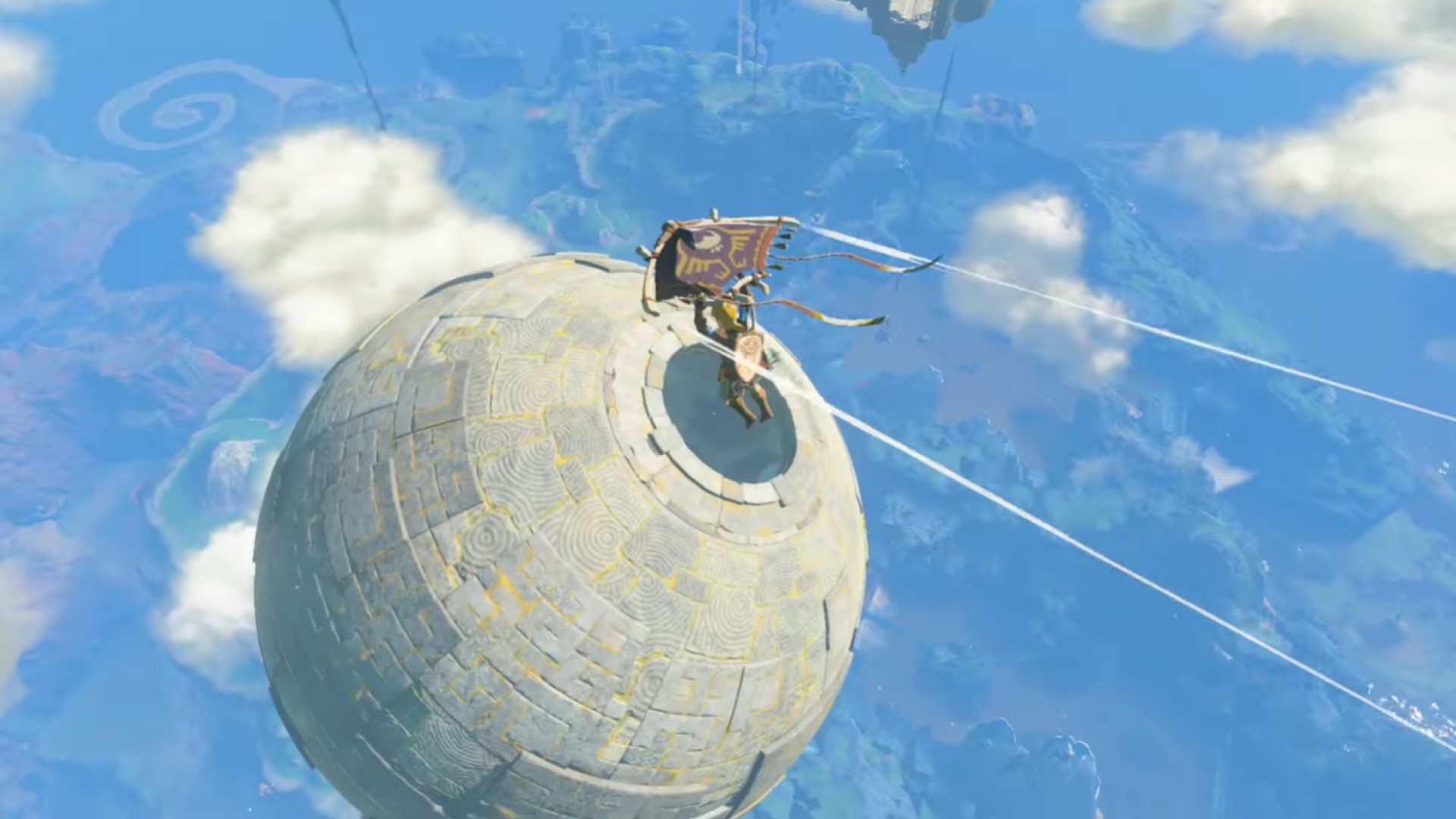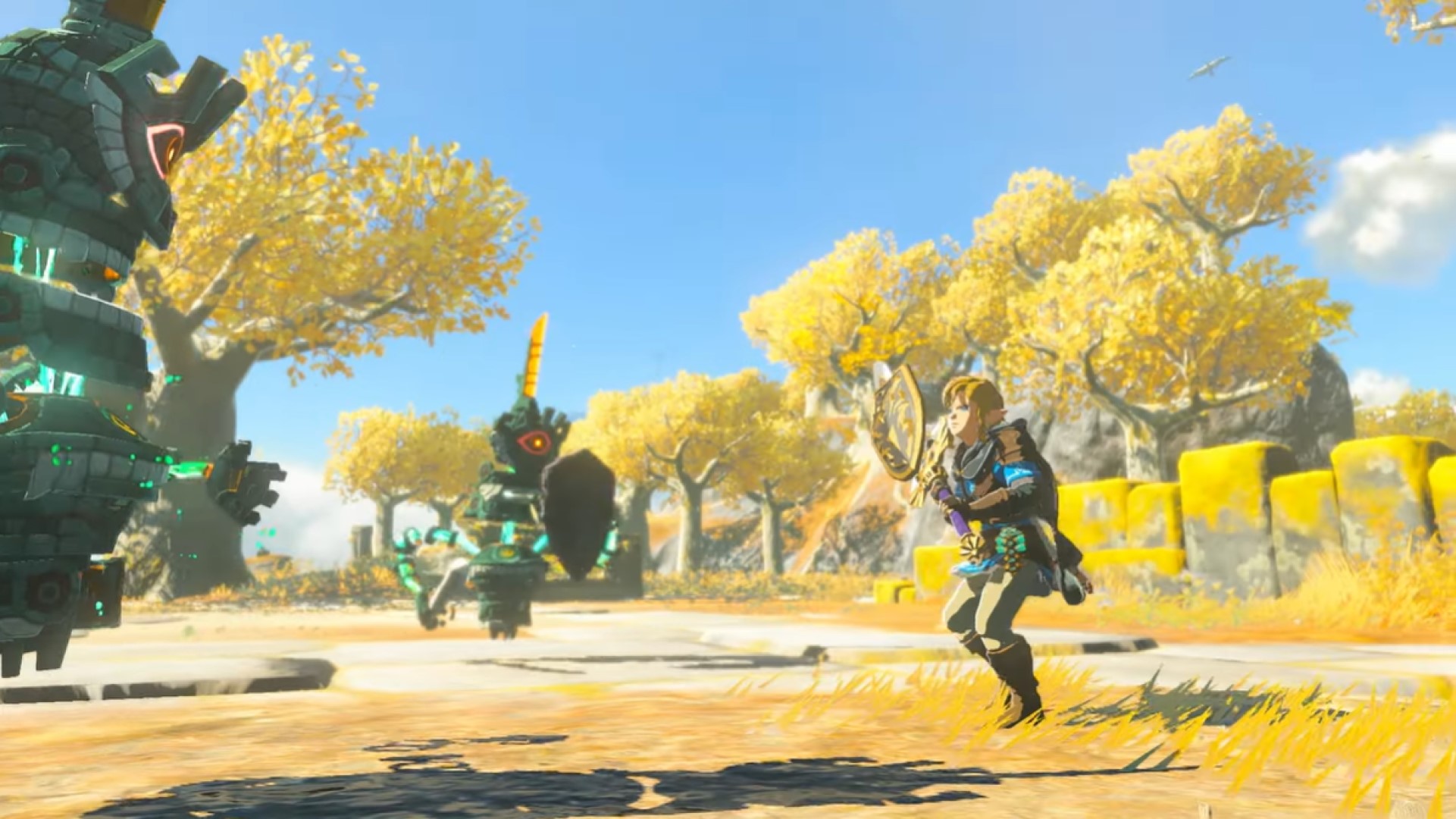Well, it’s finally here. After minimal marketing yet maximum hype, The Legend of Zelda: Tears of the Kingdom is upon us. Releasing 12th May to near universal acclaim, Tears of the Kingdom looks set to be heralded as one of the most immersive, exhilarating open world adventures ever created. It’s positives far outweigh its negatives – if it even has any significant downsides – yet some players, fans, and indeed reviewers across the web have been sharing their negative points of view surrounding the game. To be fair, some criticisms are warranted and understandable, but most aren’t significant enough to dampen Tears of the Kingdom’s overall excellent experience.
Same old Hyrule
Hyrule’s vertical expansion – one whereby Link accesses explorable floating islands risen high above the kingdom – is not enough of a development for some players, for by and large Tears of the Kingdom’s Hyrule is the same one they’ve already explored some six years prior in Breath of the Wild. Plunging the depths of Hyrule’s newfound subterranean cave network isn’t convincing everyone either. To shake things up Tears of the Kingdom moves its NPC’s about, for instance altering a locale’s status as a former haven into a monster hideout. But a handful of tweaks of this ilk aside, both games share the same landscape, leaving some fans unhappy.
30 fps
It doesn’t seem fair to criticise Tears of the Kingdom for running at 30 fps and 720p resolution on six-year-old hardware. It is clear Link’s latest adventure is pushing the Nintendo Switch to its limits but, regardless, some fans think this performance is worthy of criticism. Issues such as these are always going to divide; Tears of the Kingdom has been shown to dip to below 20 fps during especially busy set pieces, dense forests, or locales busy with water effects. Some will find this as hugely distracting, whilst others will barely notice. Loading times vary immensely too, oftentimes taking over 10 seconds to launch; again, another indicator of the developer’s aging hardware, but whilst many will see these issues as minor and temporary unfortunately a handful deem this unacceptable.
Formulaic narrative
Alongside the shared landscape, the narrative beats between Tears of the Kingdom and Breath of the Wild are closely aligned too. Again, in Tears of the Kingdom Link must forge through non-Hyrulian homelands, help townsfolk, explore a dungeon, and take on a couple of bosses before eventually storming Hyrule castle on rescue mission for Princess Zelda in an almost carbon copy story as its predecessor. Tears of the Kingdom’s vast open world that’s free to explore any which way players like contributes to a plodding story pace too, although this is perhaps a deliberate trade-off the developers were happy to make when crafting a true sandbox experience.
Exploration not as rewarding
Breath of the Wild’s crowning achievement was its seemingly limitless exploration and discovery, and whilst following your nose to satisfy curiosity often yielded rewarding results, it’s replication here in its sequel has left numerous fans dissatisfied. Going off the beaten path presents endless shrines, with discoverable gear and upgrades largely inconsequential to progression – mostly boosts to stamina or max health – with chests containing weapons that’ll likely never be needed either. It must be said though, Tears of the Kingdom’s sky islands are a breeze to explore as they’re novel; it’s Hyrule’s surface-level chasms which aren’t always worth the effort.
Uneven puzzle difficulty
Owing to Link’s newfound Zonai abilities, Tears of the Kingdom affords players numerous creative methods to overcome a problem, including tons of ways to combine the smattering of hooks, wooden boards, wheels, and bric-a-brac dotted throughout the landscape. The joyous wonder of visualising a solution – crafting a train carriage to scale a chasm’s railroad track, for instance – has been quickly replaced by overfamiliarity and staleness for some players. Utilising items littered a stone’s throw away from a puzzle is also too easy for many.
Uninspiring dungeons
A lot has been said about Breath of the Wild’s dungeons. For many, the shrines eschewing Zelda’s traditional dungeons just didn’t cut it. In Tears of the Kingdom, there still isn’t any dungeons in the traditional Zelda sense, despite pre-release hype pointing to the contrary. What we do get is an enhanced version of Breath of the Wild’s Beasts, a sideways step rather than leap forward perhaps, one where a de-linear approach to tackling the dungeon’s tasks takes priority over completing the dungeon in a specific order. Unfortunately, to accommodate the freeform nature of Tears of the Kingdom’s dungeons, each of their five tasks is clearly way pointed, taking some of the exploration and challenge out of the experience. Each dungeon has a distinct theme though, which is an advantage over Breath of the Wild’s aesthetically similar Beasts.
Shrines too easy
Tears of the Kingdom features 152 shrines dotted throughout Hyrule, 32 more than Breath of the Wild due to Kingdom’s sky islands. Shrines here test Link in various ways too, most plentiful of which are puzzles, but there are shrines which pit Link against Construct guards, sometimes with no armour or weaponry just whatever is lying around in the vicinity. Some fans of the series still aren’t happy though, claiming shrines are too easy; they’re too easy to find and then largely uneventful or meaningless once completing. The rewards are limited to HP or stamina boosts too, which displeases some.
Fiddly controls
A hangover from Breath of the Wild, admittedly Tears of the Kingdom’s controls can be a little fiddly, arguably more so than its predecessor. See, with all the creative flexibility on offer, there comes a lot of complexity too so it’s not uncommon to be elevating, rotating, and positioning objects whilst holding down several buttons. A lack of intuitiveness leading to annoyance here is understandable, so it’s a good job the joy of combining objects is so powerful, the finnicky controls take a backseat.
Endless menu scrolling
Following on from the fiddly controls attributed to complex creativity systems, with every item in Tears of the Kingdom’s inventory menu theoretically combinable with each other there is potential for a lot of scrolling through useless items to seek out the perfect thing. Oftentimes this occurs during combat too, where fusing weapons together to forge even more powerful weapons is a cumbersome necessity. Neither menu scrolling or fiddly controls are deal breaking issues, of course, as anything unintuitive can be learnt and overcome; it’s just this lack of immediacy capable of disturbing the flow of encounters has grated on some reviewers.
Questionable voice acting choices
Zelda titles of old have largely featured a voiceless cast, quirky NPCs instead characterised by mumbles and shuffles, leaving their personalities up to player interpretation. With Breath of the Wild, and now with Tears of the Kingdom, some characters are voiced whereas Link still isn’t, save for exertion, attack noises, grunts, and the like, although these are kept to a minimum. This choice by the developers creates a weird disconnect between Link and the accompanying characters; a disconnect that is overly jarring for some. Perhaps Zelda games are more effective, and less disjointed, with all characters remaining voiceless.
Note: The views expressed in this article are those of the author and do not necessarily represent the views of, and should not be attributed to, GamingBolt as an organization.
The Legend of Zelda: Tears of the Kingdom – 10 Things Fans Dislike About It
Source: News Beginning





0 Comments